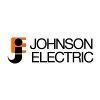Filter interviews by
Ambetronics Engineers Interview Questions and Answers
16 Interview questions
A PNP transistor is represented by a symbol with three terminals: emitter (E), base (B), and collector (C), with arrows pointing inward.
The symbol consists of a circle with three terminals: E, B, and C.
The arrow on the emitter points towards the base, indicating current flow direction.
PNP transistors are used in applications like amplifiers and switches.
In a PNP transistor, the majority charge carriers are holes.
OLED displays offer better contrast and color accuracy than LCDs, which rely on backlighting and can suffer from limited viewing angles.
OLED (Organic Light Emitting Diode) displays emit their own light, while LCD (Liquid Crystal Display) screens require a backlight.
OLEDs provide superior contrast ratios because they can turn off individual pixels completely, resulting in true blacks.
LCDs can suffer from limited vi...
Analyzing a circuit with 220-ohm and 330-ohm resistors in series involves calculating total resistance and voltage drop.
Total Resistance (R_total) = R1 + R2 = 220Ω + 330Ω = 550Ω.
Voltage Drop (V_drop) can be calculated using Ohm's Law: V = I * R.
If a current of 2A flows, V_drop across 220Ω = 2A * 220Ω = 440V.
Power Dissipation (P) can be calculated using P = I^2 * R for each resistor.
A non-inverting differential amplifier amplifies the difference between two input voltages while rejecting common-mode signals.
Uses operational amplifiers (op-amps) to achieve differential amplification.
The formula for output voltage (Vout) is Vout = (1 + R2/R1) * (V2 - V1).
R1 and R2 are resistors that set the gain of the amplifier.
Commonly used in instrumentation and sensor applications.
Example: Used in strain ga...
Passing a DSO voltage probe test requires accuracy, bandwidth, and proper calibration to ensure reliable measurements.
Accuracy: The probe should accurately reflect the input voltage within specified tolerances, e.g., ±1%.
Bandwidth: The probe must support the frequency range of the signals being tested, e.g., up to 500 MHz for high-speed signals.
Calibration: Regular calibration against a known standard is essential...
The resistor value for red, red, black, orange is 22k ohms with a tolerance of ±3%.
Color code: Red = 2, Red = 2, Black = 0 (multiplier), Orange = 3 (tolerance).
The first two colors represent significant digits: 2 and 2.
The black band indicates a multiplier of 10^0, which is 1.
The orange band indicates a tolerance of ±3%, which is common for carbon resistors.
Ground is the reference point in an electrical circuit, while phase refers to the different voltage levels in a three-phase system.
Ground is the point in an electrical circuit that serves as a common reference point for voltage measurements.
Phase refers to the different voltage levels in a three-phase system, typically denoted as A, B, and C phases.
In a three-phase system, each phase is 120 degrees out of phase wi...
AC (Alternating Current) and DC (Direct Current) differ in flow direction and applications, impacting devices and systems.
AC changes direction periodically, while DC flows in one direction.
AC is commonly used in household power supplies, e.g., wall outlets.
DC is used in batteries and electronic devices, e.g., smartphones.
AC can be easily transformed to different voltages, making it suitable for long-distance trans...
Ohm's law states that the current flowing through a conductor is directly proportional to the voltage applied across it and inversely proportional to its resistance.
Ohm's law is expressed by the formula: V = I * R, where V is the voltage, I is the current, and R is the resistance.
The law was named after the German physicist Georg Simon Ohm, who first formulated it in 1827.
Ohm's law is fundamental in understanding ...
A 10k resistor typically has a color code of brown, black, orange, and may include a gold or silver band for tolerance.
First band (Brown) represents the first digit: 1.
Second band (Black) represents the second digit: 0.
Third band (Orange) indicates the multiplier: 10^3 (or 1000).
The fourth band (Gold or Silver) indicates tolerance: Gold = ±5%, Silver = ±10%.
Ambetronics Engineers Interview Experiences
10 interviews found
Hardware Testing Engineer Interview Questions & Answers
posted on 26 Jun 2025
I appeared for an interview in May 2025, where I was asked the following questions.
- Q1. What are the differences between OLED and LCD displays?
- Ans.
OLED displays offer better contrast and color accuracy than LCDs, which rely on backlighting and can suffer from limited viewing angles.
OLED (Organic Light Emitting Diode) displays emit their own light, while LCD (Liquid Crystal Display) screens require a backlight.
OLEDs provide superior contrast ratios because they can turn off individual pixels completely, resulting in true blacks.
LCDs can suffer from limited viewing...
- Q2. What is the diagram and formula for a non-inverting differential amplifier circuit?
- Ans.
A non-inverting differential amplifier amplifies the difference between two input voltages while rejecting common-mode signals.
Uses operational amplifiers (op-amps) to achieve differential amplification.
The formula for output voltage (Vout) is Vout = (1 + R2/R1) * (V2 - V1).
R1 and R2 are resistors that set the gain of the amplifier.
Commonly used in instrumentation and sensor applications.
Example: Used in strain gauge c...
- Q3. What is the resistor value for the color code red, red, black, orange?
- Ans.
The resistor value for red, red, black, orange is 22k ohms with a tolerance of ±3%.
Color code: Red = 2, Red = 2, Black = 0 (multiplier), Orange = 3 (tolerance).
The first two colors represent significant digits: 2 and 2.
The black band indicates a multiplier of 10^0, which is 1.
The orange band indicates a tolerance of ±3%, which is common for carbon resistors.
- Q4. What is the symbol for a PNP transistor?
- Ans.
A PNP transistor is represented by a symbol with three terminals: emitter (E), base (B), and collector (C), with arrows pointing inward.
The symbol consists of a circle with three terminals: E, B, and C.
The arrow on the emitter points towards the base, indicating current flow direction.
PNP transistors are used in applications like amplifiers and switches.
In a PNP transistor, the majority charge carriers are holes.
- Q5. What calculations are involved in analyzing a circuit with 220-ohm and 330-ohm resistors connected in series?
- Ans.
Analyzing a circuit with 220-ohm and 330-ohm resistors in series involves calculating total resistance and voltage drop.
Total Resistance (R_total) = R1 + R2 = 220Ω + 330Ω = 550Ω.
Voltage Drop (V_drop) can be calculated using Ohm's Law: V = I * R.
If a current of 2A flows, V_drop across 220Ω = 2A * 220Ω = 440V.
Power Dissipation (P) can be calculated using P = I^2 * R for each resistor.
- Q6. Gas detector pcb ripple measurement on dso
- Q7. Gas detector pcb circuit diagram reading
- Ans.
Understanding gas detector PCB circuit diagrams involves analyzing components and their functions in detecting gas concentrations.
Identify the main components: sensors, microcontrollers, and power supply.
Understand the sensor's working principle, e.g., electrochemical or infrared.
Trace the signal path from the sensor to the microcontroller.
Check for calibration circuits that adjust sensor output.
Look for indicators lik...
- Q8. What are the criteria for passing a DSO voltage probe test?
- Ans.
Passing a DSO voltage probe test requires accuracy, bandwidth, and proper calibration to ensure reliable measurements.
Accuracy: The probe should accurately reflect the input voltage within specified tolerances, e.g., ±1%.
Bandwidth: The probe must support the frequency range of the signals being tested, e.g., up to 500 MHz for high-speed signals.
Calibration: Regular calibration against a known standard is essential to m...
I applied via Company Website and was interviewed in Jan 2024. There were 2 interview rounds.
Resistor colour codes and FET,Transister
(5 Questions)
- Q1. On Colour codes
- Q2. Colour code pf 10k resistor
- Ans.
A 10k resistor typically has a color code of brown, black, orange, and may include a gold or silver band for tolerance.
First band (Brown) represents the first digit: 1.
Second band (Black) represents the second digit: 0.
Third band (Orange) indicates the multiplier: 10^3 (or 1000).
The fourth band (Gold or Silver) indicates tolerance: Gold = ±5%, Silver = ±10%.
- Q3. Voltage devider rule
- Ans.
The voltage divider rule is used to calculate the voltage across a resistor in a series circuit.
The voltage divider rule states that the voltage across a resistor in a series circuit is proportional to its resistance.
The formula for the voltage divider rule is Vout = Vin * (R2 / (R1 + R2)), where Vout is the voltage across R2, Vin is the input voltage, R1 is the resistance before R2, and R2 is the resistance across whi...
- Q4. Ohms law in detail and formula
- Ans.
Ohm's law states that the current flowing through a conductor is directly proportional to the voltage applied across it and inversely proportional to its resistance.
Ohm's law is expressed by the formula: V = I * R, where V is the voltage, I is the current, and R is the resistance.
The law was named after the German physicist Georg Simon Ohm, who first formulated it in 1827.
Ohm's law is fundamental in understanding and a...
- Q5. What is FET,Give difference FET and transister
- Ans.
FET stands for Field-Effect Transistor. It is a type of transistor that uses an electric field to control the flow of current.
FET is a three-terminal device used for amplification and switching of electronic signals.
It has a high input impedance and low output impedance.
FETs are classified into two types: JFET (Junction Field-Effect Transistor) and MOSFET (Metal-Oxide-Semiconductor Field-Effect Transistor).
The main dif...
I applied via Campus Placement and was interviewed in Feb 2024. There was 1 interview round.
(2 Questions)
- Q1. A.c to d.c diffrent
- Ans.
AC (Alternating Current) and DC (Direct Current) differ in flow direction and applications, impacting devices and systems.
AC changes direction periodically, while DC flows in one direction.
AC is commonly used in household power supplies, e.g., wall outlets.
DC is used in batteries and electronic devices, e.g., smartphones.
AC can be easily transformed to different voltages, making it suitable for long-distance transmissi...
- Q2. Explain the ground, phase
- Ans.
Ground is the reference point in an electrical circuit, while phase refers to the different voltage levels in a three-phase system.
Ground is the point in an electrical circuit that serves as a common reference point for voltage measurements.
Phase refers to the different voltage levels in a three-phase system, typically denoted as A, B, and C phases.
In a three-phase system, each phase is 120 degrees out of phase with th...
Interview Preparation Tips
- What is A.c and d.c
- What is LPG
I applied via Company Website and was interviewed in Jul 2023. There were 2 interview rounds.

(2 Questions)
- Q1. Basic knowledge of electronic components
- Q2. Diode, transistor, rasisior,etc
Interview Preparation Tips
- Power Electronics
- Electronic Components
- Digital Electronics

(2 Questions)
- Q1. 1. Hardware related questions - resistor, inductor, symbols, ohm law, 2,3 basic theorem. 2. Basic C programming questions
- Q2. Basic Code Building Questions
Interview Preparation Tips
I applied via Company Website and was interviewed in Feb 2023. There were 4 interview rounds.

Basic electronics questions.. Like voltage devider rule.. Amplifier gain, resistor value by color code
(1 Question)
- Q1. General question like salary expectations, why are you switching
Design was given to complete.. From schematic to c design we need to make all. Footprints were given.

(1 Question)
- Q1. Previous company profile
(1 Question)
- Q1. About tally entry
I applied via Approached by Company and was interviewed in Feb 2022. There were 8 interview rounds.

Basic questions of electronics
What is the resistor colour code?
What is the symbol of transistor, diode, FET?
Difference between transistor & FET
Volatage divider formula.
Find gain from OPAMP circuit
Ohm's law.
Toatl capictance formula.
Total rsistance formula.
1megaohm = ???
10k resistor colour code??
(7 Questions)
- Q1. Share details of your previous job.
- Q2. Why should we hire you?
- Q3. What are your salary expectations?
- Q4. What is your family background?
- Q5. Why are you looking for a change?
- Q6. Tell me about yourself.
- Q7. Are you ready for service agreement? Agreement of 30 months & 36 months?
(1 Question)
- Q1. What is the modbus? Difference between modbus & uart? Bridge rectifier? Explain bridge rectifier? Draw blaock diagram of your previous project. Modbus signals Working of uart Spi I2c
- Ans.
Modbus is a communication protocol used in industrial automation. UART is a hardware interface. Bridge rectifier converts AC to DC.
Modbus is used to communicate between devices in industrial automation systems.
UART is a hardware interface used for serial communication between devices.
Bridge rectifier is an electronic component used to convert AC to DC.
Modbus signals are sent over a serial communication link.
UART works ...
Technical assignment of ambetronics projects:
1) test procedure of there products
2) asking technical questions on ambetrobics products.
Test for pcb design:
1) how many layers do you have design?
2) stitching capacitor
3) decoupling capacitor
4) how to start pcb project
5) how to start pcb layout
6) how to create footprint?
Assignement of pcb designing with circuit & pcb layout
Requirement:
Size of pcb compact
Duration: 1hr
(1 Question)
- Q1. HOD of R&D asking questions about pcb design & overall
Interview Preparation Tips
- Modbus
- Basic hardware
- I2C
- SPI
- Power Electronics
- PCB Designing
- Embedded C
Taking full day interview.
Interview starts from 11:30 am to 7 pm
Boring interview process.
HR department helpful.
Technical department not professional.
Skills evaluated in this interview
I applied via Campus Placement and was interviewed before Jun 2023. There was 1 interview round.
(2 Questions)
- Q1. Are you join for a long time?
- Q2. Are you working for atleast 3 year's?
Interview Preparation Tips
- 3D Modeling
Interview Questionnaire
4 Questions
- Q1. Location of Gas detectors
- Ans.
Gas detectors should be strategically placed in areas where gas leaks are most likely to occur.
Gas detectors should be placed near potential gas leak sources such as gas pipelines, valves, and storage tanks.
They should also be placed in areas where gas can accumulate such as low-lying areas and confined spaces.
The number of gas detectors required depends on the size of the area and the potential hazards.
Gas detectors s...
- Q2. Density of various Gases
- Ans.
Density of gases varies based on their molecular weight and temperature.
Density is measured in kg/m³ or g/L.
At standard temperature and pressure (STP), the density of air is 1.2 kg/m³.
The density of helium is much lower than air, at 0.1785 kg/m³.
The density of carbon dioxide is higher than air, at 1.98 kg/m³.
The density of hydrogen is much lower than air, at 0.0899 kg/m³.
- Q3. Practicals on how to calibrate Ambetronics gas detectors.
- Q4. Basic electronics
Interview Preparation Tips
Top trending discussions






Ambetronics Engineers Interview FAQs
Some of the top questions asked at the Ambetronics Engineers interview -
The duration of Ambetronics Engineers interview process can vary, but typically it takes about less than 2 weeks to complete.
Tell us how to improve this page.
Ambetronics Engineers Interviews By Designations
- Ambetronics Engineers Customer Service Engineer Interview Questions
- Ambetronics Engineers Hardware Testing Engineer Interview Questions
- Ambetronics Engineers Electronics Engineer Interview Questions
- Ambetronics Engineers Design Engineer Interview Questions
- Ambetronics Engineers Embedded Hardware Design Engineer Interview Questions
- Ambetronics Engineers PCB Design Engineer Interview Questions
- Ambetronics Engineers Executive Accountant Interview Questions
- Ambetronics Engineers Customer Service Executive Interview Questions
- Show more
Interview Questions for Popular Designations
Overall Interview Experience Rating
based on 9 interview experiences
Difficulty level
Duration
Interview Questions from Similar Companies
Ambetronics Engineers Reviews and Ratings
based on 41 reviews
Rating in categories
|
Service Engineer
26
salaries
| ₹2.1 L/yr - ₹4 L/yr |
|
Production Engineer
17
salaries
| ₹1.1 L/yr - ₹3.5 L/yr |
|
R&D Engineer
9
salaries
| ₹1.5 L/yr - ₹4.5 L/yr |
|
Junior Engineer
6
salaries
| ₹1.5 L/yr - ₹3.2 L/yr |
|
Senior Service Engineer
5
salaries
| ₹2.8 L/yr - ₹3.8 L/yr |

JBS Enterprises

Essae Digitronics

La-Gajjar Machineries

East India Technologies
- Home >
- Interviews >
- Ambetronics Engineers Interview Questions














